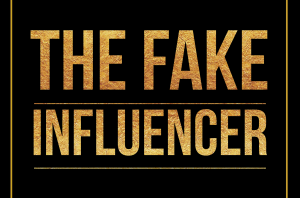
The dream of many luxury fashion brands, and many would-be shopkeeps, is a store on Madison Avenue, New York’s gilded thoroughfare. Moda Operandi, the e-commerce website, whose signal innovation is to allow users to order clothes directly off the runways of fashion week, is opening just there, with the slight hitch that the store will not, at least in the traditional sense, be open.
That is because Moda Operandi Madison, which occupies two floors of a 1910 townhouse on 64th Street just west of Madison Avenue, is not a shop as conventionally understood. It is a by-appointment showroom for the very few.
Those invited to buy there — likely no more than 300 per year, according to Deborah Nicodemus, Moda Operandi’s chief executive — will enter a store whose goods are customized to their sizes, tastes and tendencies, whose salespeople know the full history of their dealings with Moda Operandi online: what they bought, browsed, bookmarked, exchanged or returned (very little, according to the company).
The selection will be tailored accordingly. Moda Operandi Madison is a store that transforms itself, with effort and tech, into whatever its current customer would hope it to be.
“Shopping online is already the perfect experience,” said Lauren Santo Domingo, a co-founder of Moda Operandi and a contributing editor at Vogue. “How are we adding to that?”
The answer is by mining the data on its best customers, who spend an average of $1,200 per order ($5,000 during fashion weeks, peak season) and order an average of seven to eight times a year, to bring the online experience into the real world, in the softest-landing, most kid-glove way possible. In private shopping visits, the deterrents of usual stores are dispensed with. Key among these, Ms. Santo Domingo said, are “other people, just in general.”
For these customers, privacy is paramount and discretion the cardinal virtue. “We are definitely not interested in foot traffic,” Ms. Nicodemus said.
At the London showroom that Moda Operandi opened in 2014, which earned its entire first quarter’s projected revenue in one month, privacy proved to be its selling point. “The clients that we actually serve, they’re not in public that much,” she said. (She was referring to members of various Middle Eastern royal families. Bomb sweeps before shopping visits are not unheard-of.)
That lesson has been well learned, even if the result borders occasionally on paranoia. (“Our woman has been trained to shop online,” Ms. Santo Domingo said. “Interacting in a physical environment has become almost paralyzing.”) In New York, the only indication from the outside that Moda Operandi Madison is open for business is one small street-facing window, behind which, inside a decorative inset frame, a single Giambattista Valli couture gown undulates slightly in a manufactured breeze.
“I wanted it to feel voyeuristic,” Ms. Santo Domingo said. It is like peering into the red-light district of high-end retail.
Inside, past the heavy curtains in the vestibule, Moda is a confectionary wonderland, a haven with gelato-colored walls and blush suede furniture. Aside from a fine jewelry salon in one back room (fine jewelry, ranging from $10,000 to $100,000, has turned out to be a strong seller for Moda), the entire space is adaptable and as customizable as its stock.
Its offerings include haute couture, emerging designers, “occasion” dresses, jewelry, bags, shoes and accessories. Given this breadth, and the fact that clients are often buying for multiple homes, appointments can run long. There is an on-site kitchen for when shopping and lunch coincide.
Much of the company’s business, as much as 60 percent, is still in orders from the runways, and it will not purchase stock specifically for the Madison store the way that an ordinary retailer would. That means much of the gratification is delayed, though most appointments will feature some in-season products that can be purchased and worn out of the store.
Whether gratification comes immediately or four to six months later, Ms. Santo Domingo said her customers come ready to purchase. The company has no minimum-purchase policy for its private appointments, or any stated expectation of purchases at all. It has confidence in its system. “If she’s not buying something,” Ms. Santo Domingo said, “our algorithm’s off.”
Moda Operandi’s backers seem to have confidence, too. The site has raised more than $130 million in funding to date, most recently in a Series E round led by Fidelity Investments in February 2015. LVMH, the luxury conglomerate, and Advance Publications, the parent company of Condé Nast, are investors. Ms. Nicodemus, the chief executive, said there is proof the showroom model works: After the London showroom opened, sales for the territory doubled.
She plans an aggressive rollout worldwide, the next in Abu Dhabi in 2017. The rest of the Middle East, Hong Kong and South Korea are on the horizon. The company plans to have 15 showrooms by 2021, the better to white-glove its customers where they live, as well as where they travel.
As if that weren’t enough, Ms. Santo Domingo is also one of the primary discoverers of new labels and brands for the website, and promoting lesser-known lights is a particular point of pride. One such rising talent, the Colombian designer Johanna Ortiz, has become one of the site’s top sellers. Nevertheless, Ms. Santo Domingo scoffed at the notion that she is a gatekeeper of fashion.
“I don’t think there is necessarily a gate to be kept,” she said. “I wonder if those days of fashion being elitist and exclusive aren’t gone altogether.”
By Ny times
Want to share your content on Slaylebrity? Click here




